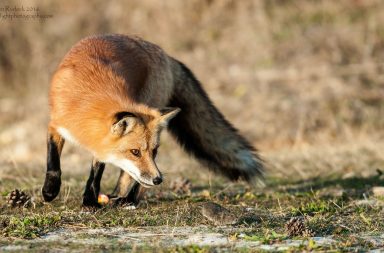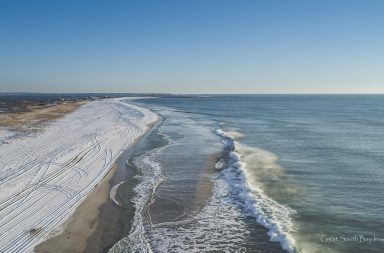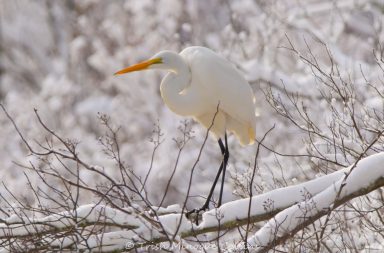By Dianne Taggart
Eastern Meadowlark
Even though we have a population that spends the winter with us on LI, the song of the Eastern Meadowlark heralds springtime. Even our verbal representation of their pure, flutelike, whistling, 3-5 note song, “spring of the year”, suggests the season. The Eastern is found only in the eastern US, but the Western Meadowlark is considered a “sibling species” and almost identical, except in song. Ranges of these two meadowlarks overlap to some degree in the Midwest and southwest, but interbreeding is not common; more common are territorial disputes.
The Eastern Meadowlark is actually not a lark at all, but is related to the blackbird family. Nine and a half inches in length, it has a bright yellow breast with black crescent-shaped patch and is striking in color. This is a mid-sized bird, with a long, slender bill, short tail and long legs. A dark crown with light stripe, brown and black wings and tail, and white tail markings (seen when in flight) conclude our physical description of this very pretty bird. Females have similar markings, but are duller in color.
Eastern Meadowlarks are found mostly in grasslands, croplands, along roadsides, golf courses, airports and fields. They sing from the ground or elevated perches (fence posts are popular). They are primarily ground foragers, as they probe for insects, searching clods of dirt and manure. They exhibit a type of foraging called “gaping” where they insert their bill into clods of dirt or under rocks, and snap open the bill dislodging insects. They are often likened to quail in their movements and foraging habits and were even formally known by hunters as “marsh quail”. Their diet consists mostly of insects during breeding season, but they will switch to weeds and grains in winter.
- Meadowlarks are fairly shy and will try to slink away in the grass if approached; if frightened, they will explode into flight. They are socially gregarious and, during non-breeding times, can be found feeding and roosting in rather large flocks (in winter, sometimes more than 100). They roost on the ground in thick grass and can frequently be found sun-bathing (which helps with feather parasites). During breeding season resident males will defend territories vigorously, chasing intruders in short flights, but longer if intruder is persistent. Body contact fighting is rare, but can be severe with wings, bill and feet involved. There is also much song competition during mating season.
Males return to the same territory each year; a 5-8 acre area. Male Meadowlarks will have two, sometimes three, mates with active nests going at the same time. Pairing lasts until parental duties are done. Courtship involves aerial chases and duets; if a male has two mates, the aerial chases may involve all three adults. Courtship also consists of bill tilting to show off black patch on chest, wing flashing, tail-spreading and jump flights (male jumps straight up, short flight and lands). The nest, built by the female, is placed on the ground and is a domed-type nest, with a side entrance and often with long entrance tunnels. Incubation is done by female and lasts 13-15 days. After hatching, the chicks fledge in 10-12 days. They are fed by both parents, but the male will take over the feeding if the female starts building a second nest. Males usually chase independent juveniles off the territory as soon as possible.
Eastern Meadowlarks are present on their ranges most of the year, although extreme northern nesters will migrate further south if the snow coverage becomes a problem. There has been a steady decline in populations since the 1970’s, mostly in New England and other northeastern states; this is most likely due to loss of grassland habitats. The typical life span of the Eastern Meadowlark is 3-5 years. We can see Eastern Meadowlarks at the Calverton grasslands (EPCAL/Grumman), where they nest and a small population stays with us all winter.
The Eastern Meadowlark – a beautiful bird, with a beautiful song, living, nesting and residing here on Long Island.

Russ Ogden

Grace Scalzo
More photos on page 2!



